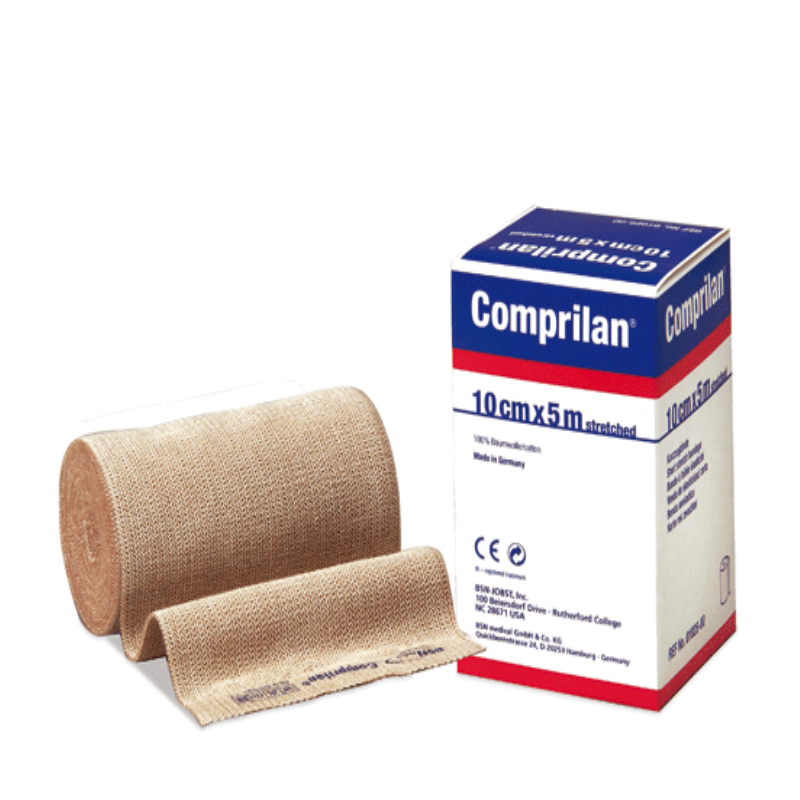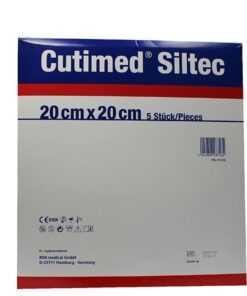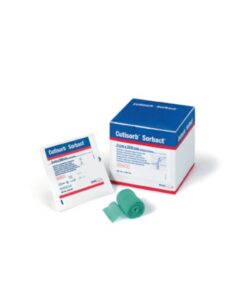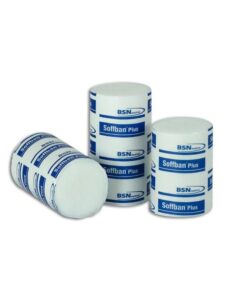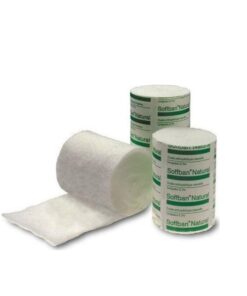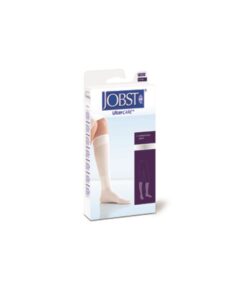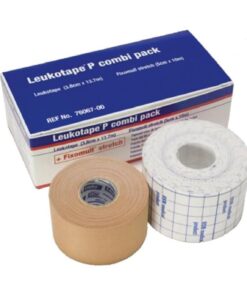Description
The BSN Comprilan Bandage is a short stretch compression bandage made from 100% cotton (contains no elastic yarns) and is specifically designed for the management of venous leg ulcers, lymphedema, and edema. It is both air-permeable and latex-free, and is particularly suitable for sensitive skin.
The BSN Comprilan Bandage is sterilizable (autoclave) and reusable, and is ideal for double-bandaging techniques. The short stretch bandage is textile elastic, and is highly skin friendly.
The BSN Comprilan Bandage can be washed many times at 40°C without losing its specific features. The bandage ends do not fray and the interlocking weave provides air permeability. This short stretch bandage is durable and extremely sturdy.
Unlike long stretch bandages, the BSN Comprilan Bandage provides both compression and high resistance to stretch to increase venous and lymphatic return.
Size: 10cm x 5m.
Uses
The BSN Comprilan Bandage is used for phlebologic and lymphologic diseases, such as varicosis, thrombophlebitis, phlebothrombosis, chronic venous insufficiency (incl. venous leg ulcers and venous edema), primary and secondary lymphedema, after vein surgery and after sclerotheraphy.
The BSN Comprilan Bandage is used in lymphoedema management, and supports the muscle pump for elimination of lymphatic stasis.
Application
Comprilan guide to multi-layer Lymphoedema bandaging for the arm
Before bandaging, carefully massage on skin conditioner (Replenishing Lotion) into the skin. Measure out the tubular bandage (Stockinette) to be used as underwrap: double the arm length from the back of the hand to the shoulder. Draw the tubular bandage (Stockinette) creasefree from the back of the hand to the shoulder. Cut a hole in the bandage for the thumb.
Bandaging of the fingers with doubled fixation bandage starts with an anchor on the wrist and metacarpo-phalangeal joints. Bandage the fingers with a least two turns applied singly with light tension. Leave the finger pads free. Secure each finger bandage with an anchor around the back of the hand. Bandage the thumb in the same manner as the fingers.
Pad with a 10cm wide padded bandage and place thumb through an aperture. Bandage the forearm with half-overlapping circular turns. Fix a prepared padding element for the elbow using a padded bandage.Starting with a 15cm wide padded bandage distal to the elbow, bandage the arm towards proximal and complete the padding with two further 15cm wide padded bandages.
Start the compression bandage of short stretch bandages (Comprilan) with an anchor on the wrist (bandage width 6cm). The turns run from the back of the hand to the palm, returning to the back of the hand. After one turn across the middle phalanx of the thumb, hold the edge of the bandage down. To prevent pocketing between the thumb and the index finger, press down the edge of the previous turn. Repeat this turn once more.
The first short-stretch bandage ends with two figures of eight just behind the wrist.The patient presses their clenched fist against the therapist’s abdomen and tenses the muscles. An 8cm wide short-stretch bandage runs from the wrist in long figures of eight to below the elbow. In the opposite directions, beginning with a circular turn, apply a 10cm wide short stretch bandage (Comprilan) in figures of eight over the elbow and upper arm. It ends with 2-3 circular turns below the shoulder.
Fix the end of the bandage with strips of Leukopor. Pull the end of the tubular bandage over the edge of the bandage for protection. On the forearm, the finished bandage consists of five layers of short-stretch bandage (Comprilan), at the proximal end of only three layers.
Comprilan guide to multi-layer Lymphoedema bandaging for the leg
Before bandaging, carefully massage on skin conditioner (Replenishing Lotion) into the skin. Measure out the tubular bandage (Stockinette) to be used as underwrap: twice the leg length from the tip of the foot to the groin. Gather up the bandage (Stockinette) along its entire length and pull onto the leg as far as the groin. The section remaining at both ends is later pulled over the padding material.
To bandage the toes, use a fixation bandage. Start with an anchor around the forefoot. Bandage the big toe with light tension. Then bandage the other toes. Leave out the small toe since it is very pressure sensitive and usually not oedematous. Finish the toe bandaging with an anchor around the metatarsophalangeal joints.
Starting on the forefoot, apply a 10cm wide padded bandage and take in loose circular turns to the calf. The end of the tubular bandage fixes the start of the bandage. Apply Soffban® in circular turns from the calf to the groin ensuring a conical shape. Begin with two turns of a 6cm wide short-stretch bandage (Comprilan) around the metatarsophalangeal joints. No bandage tension, then roll the bandage over the medial edge of the foot across the heel to the dorsal foot (do not pull). Repeat this turn slightly offset and take the bandage into a extended figure of eight.
Fit the ankle with an 8cm wide short-stretch bandage (Comprilan).The bandage runs in figures of eight 2-3 times around the upper ankle and the foot between the individual turns of bandage is especially important. The bandage should therefore be smoothed down well and creasing scrupulously avoided. If necessary, the bandage can be reinforced with a further 8cm wide short-stretch bandage (Comprilan).
Bandage the calf in figures of eight using a 10cm wide short stretch bandage, starting with a circular anchor. On top of this apply another 10cm wide short-stretch bandage (Comprilan) in figures of eight in the opposite direction. To make the plaster strips easier to remove when changing the bandage, the ends of the strips should be folded over.
Bandage the rest of the lower leg with a 10cm wide short-stretch bandage (Comprilan®) running in the opposite direction. 22. The bandage ends below the knee; fix its end with strips of Leukopor®. Starting with Soffban® below the knee, pad the thigh as far as the groin.Pad the hollow of the knee with foam, length about 1/2 of the knee circumference. Apply a 12cm wide short-stretch bandage (Comprilan) starting with a circular turn above the calf, in tortoise turns closely overlapping around the knee. Smooth the bandage down towards the patella.
Fit the thigh with a further 12cm wide short-stretch bandage (Comprilan), applied in the opposite direction, with highly overlapping figures of eight and fix with strips of tape.

